
USS Abercrombie (DE-343) was a John C. Butler-class destroyer escort in the service of the United States Navy from 1944 to 1946. She was finally sunk as a target in 1968.
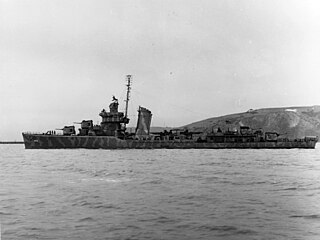
USS Hughes (DD-410) was a World War II-era Sims-class destroyer in the service of the United States Navy.

USS Howard (DD–179), (DMS-7) was a Wickes-class destroyer in the United States Navy during World War II. She was named for Charles W. Howard, who was killed in the American Civil War aboard USS New Ironsides.

USS Howorth (DD-592) was a Fletcher-class destroyer built for the United States Navy during World War II.
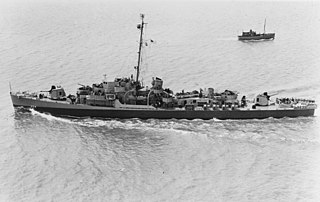
USS Rudderow (DE-224) was the lead ship of her class of destroyer escorts, in service with the United States Navy from 1944 to 1947. After spending decades in reserve, she was sold for scrap in 1970.

USS Haraden (DD-585), a Fletcher-class destroyer, was the second ship of the United States Navy to be named for Jonathan Haraden (1744–1803), a privateer of the American Revolutionary War.

USS Lardner (DD-487), a Gleaves-class destroyer, was the second United States Navy ship to be named for Rear Admiral James L. Lardner, a Naval officer during the American Civil War. Lardner received 10 battle stars for World War II service.

USS Jobb (DE-707) was a Rudderow-class destroyer escort in service with the United States Navy from 1944 to 1946. She was sold for scrap in 1970.

USS Charles J. Badger (DD-657) was a Fletcher-class destroyer of the United States Navy, named for Rear Admiral Charles J. Badger (1853–1932), whose service included the Spanish–American War and World War I.

USS Walton (DE-361) was a John C. Butler-class destroyer escort in the United States Navy. It was named after Merrit Cecil Walton, a Marine Corps platoon sergeant with the U.S. 1st Marine Division, who died on Gavutu during the Battle of Guadalcanal and was posthumously awarded the Navy Cross for "extraordinary heroism".

USS Manning (DE-199) was a Buckley-class destroyer escort in service with the United States Navy from 1943 to 1947. She was scrapped in 1969.
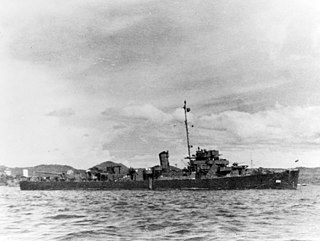
USS James E. Craig (DE-201) was a Buckley-class destroyer escort in service with the United States Navy from 1943 to 1946. She was sunk as a target in 1969.

USS Major (DE-796) was a Buckley-class destroyer escort in service with the United States Navy from 1944 to 1948. She was scrapped in 1973.

USS Gunason (DE-795) a Buckley-class destroyer escort of the United States Navy, was named in honor of Lieutenant Robert W. Gunason who was killed in action while serving on USS Astoria during the Battle of Savo Island.
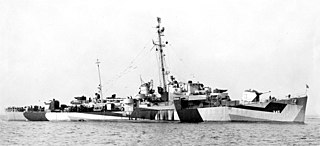
USS Robert Brazier (DE-345) was a John C. Butler-class destroyer escort in service with the United States Navy from 1944 to 1946. She was sunk as a target in 1969.
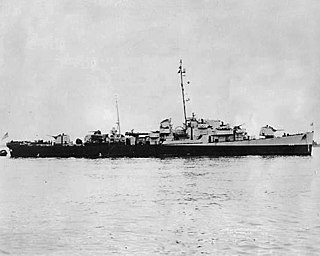
USS Traw (DE-350) was a John C. Butler-class destroyer escort in service with the United States Navy from 1944 to 1946. She was sunk as a target in 1968.

USS Jaccard (DE-355) was a John C. Butler-class destroyer escort acquired by the U.S. Navy during World War II. The primary purpose of the destroyer escort was to escort and protect ships in convoy, in addition to other tasks as assigned, such as patrol or radar picket. Post-war, she returned home with one battle star to her credit.

USS George E. Davis (DE-357) was a John C. Butler-class destroyer escort acquired by the U.S. Navy during World War II. The primary purpose of the destroyer escort was to escort and protect ships in convoy, in addition to other tasks as assigned, such as patrol or radar picket.
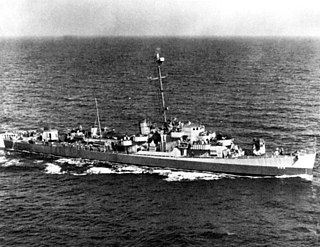
USS Day (DE-225) was a Rudderow-class destroyer escort in the United States Navy during World War II.

USS Riley (DE-579) was a Rudderow-class destroyer escort in the United States Navy during World War II. She later transferred to the Republic of China Navy and served as Tai Yuan (DE-27). The ship was finally scrapped in 1996.




















